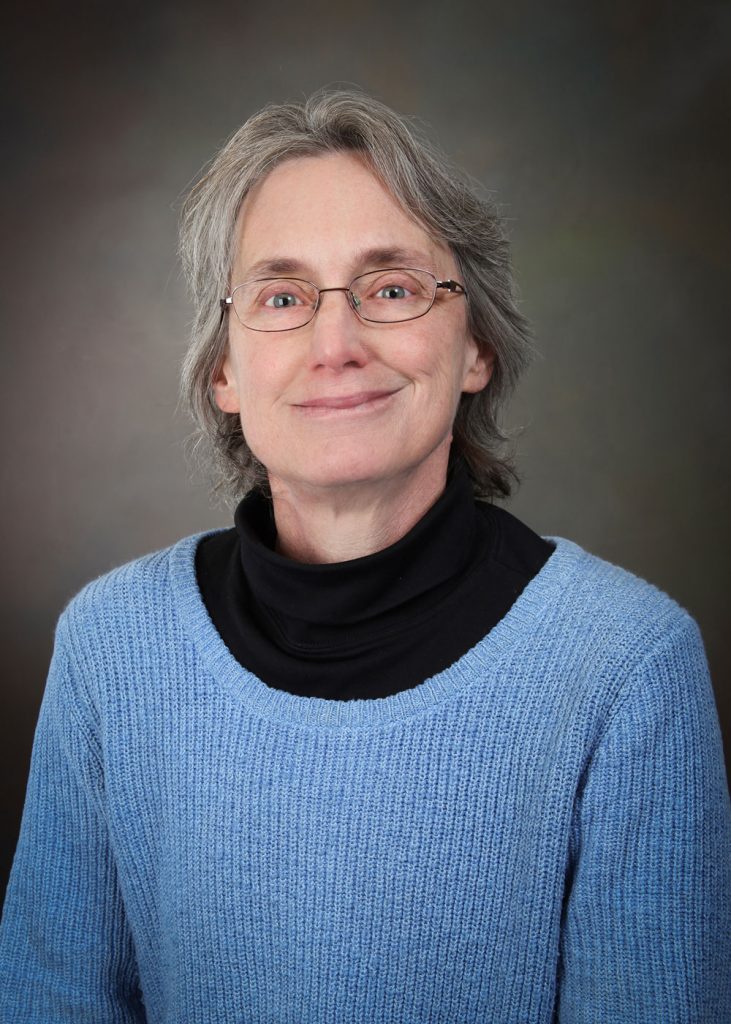
Anyone in need of a dose of modesty about their achievements might contemplate the vita of Sandia Fellow and computer scientist Cynthia Phillips. Be prepared to spend a few hours.
Consider the papers she’s published, approximately 100, including conference publications; number of technical program committees she sits on, 34; professional conference leadership, 18; professional society leadership roles, 15; honors and awards, 13; advisory boards and funding panels, seven; patents, three; and many mentoring opportunities.
“There’s so much joy in getting great research results. It buoys you,” she said. “There’s a great burst of happiness when you solve a problem. And then you never get it right the first time. You think you had it and the next morning realize you didn’t, so there can be multiple bursts of happiness for a single problem.”
Cynthia has an unusual capability to tolerate small amounts of sleep. In her college years, she sometimes slept two hours a night for a week, and when her children were young, she regularly reserved Wednesdays for all-nighters.
At Sandia, which she praised for its promotion of work-life balance, when her children were young, she worked six hours a day at Sandia and at night after her family was in bed. “There are fewer distractions at night,” she said.
She never rested on her academic laurels after attending Harvard for her bachelor’s degree in 1983 and the Massachusetts Institute of Technology for her master’s degree in 1985 and doctorate in 1990, all involving mathematics and computer science.
She learned about Sandia from working summer and part-time jobs at Thinking Machines, the company that built the Connection Machine supercomputers. Her husband, realizing Sandia was an employment opportunity for his wife, ranked the University of New Mexico as his top choice for his radiology residency and was offered a position.
“I was fortunate to get a job at Sandia,” Cynthia said, “since not long afterward, there were some hiring freezes.”
Among the projects the modest fellow has undertaken was optimizing the placement of contaminant sensors for municipal water supplies after the destruction of 9/11, when fear of further attacks from adversaries was high. The team, primarily from Sandia and the Environmental Protection Agency, developed award-winning combinatorial models and optimization algorithms that were used by many municipalities to place sensors most effectively.
She also developed a graph-based framework for analyzing the vulnerability of computer networks to cyber intrusions. This patented framework was widely adopted by the security community, and her paper introducing the model has more than 1,000 citations.
To further help deal with cybersecurity challenges, she partnered with professors and Sandians to bring ideas from the database community. They created write-optimized data structures for external memory to enable better detection of multipiece patterns in streaming cyber data.
Some of Cynthia’s recent work has contributed combinatorial insights to the use of quantum and neuromorphic architectures. Her recent papers with other authors demonstrate the advantages of neuro-inspired machines for practical applications in graph algorithms and dynamic programming. Elements of this work have been patented.
She also was a key member of a team developing a novel approach to assigning workloads to processors in a large parallel computer. For efficiency, it’s best to allocate a job to a set of processors that are close together in the network. The team developed a patented methodology that did this and built a tool that demonstrated a significant increase in overall throughput. This tool was installed in high-performance computing centers worldwide.
Among her goals, she hopes that the higher level of influence she will have as a fellow will help make everyday life easier “for Sandians doing important work.” This involves modifying conservative processes in sharing ideas that have kept Sandia out of negative limelight but also have made things hard on collaborating university or industry colleagues.
“And there are other issues as well,” she said. “It’s hard to put my work in a box. As you can see, its focus is always changing as fields and mission priorities evolve.”